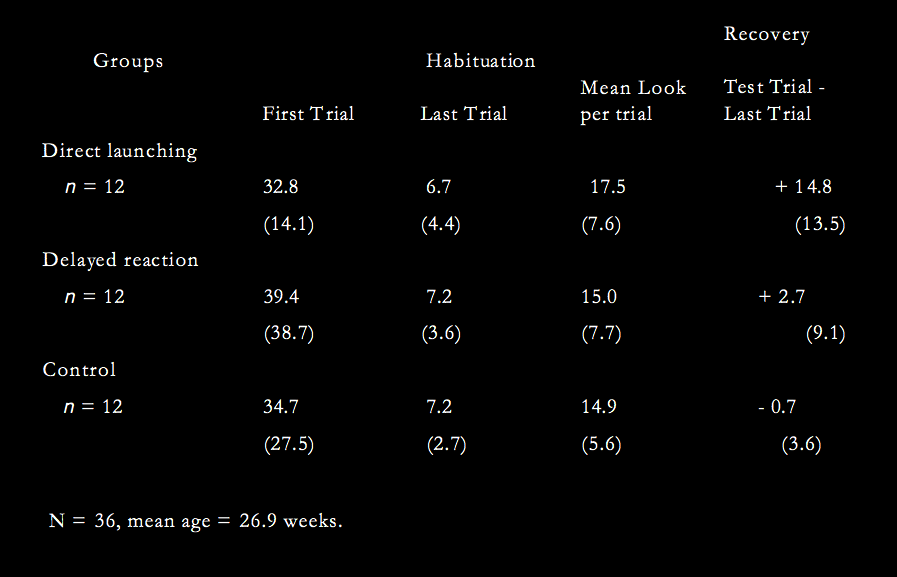Click here and press the right key for the next slide (or swipe left)
also ...
Press the left key to go backwards (or swipe right)
Press n to toggle whether notes are shown (or add '?notes' to the url before the #)
Press m or double tap to slide thumbnails (menu)
Press ? at any time to show the keyboard shortcuts

Causal Interactions
[email protected]
Can humans perceive causal interactions?

Thines et al (1991)

Scholl & Tremoulet 2001, figure 2
detecting launching effects at 6 months


Leslie & Keeble 1987, figure 4

Leslie & Keeble 1987, table 4

Heider & Simmel 1946, figure 1
Can humans perceive causal interactions?

Perceptual Processes
How to get beyond intuition?
Step 1: Distinguish the effect from its intepretation.
Michotte: the experience of launching depends on interactions among various factors including
- the relative speeds of the two objects
- the delay between the first and second objects’ movements
- the spatial gap between the two objects
- the trajectories of the two objects.

Michotte 1946 [1963], p. 115 table IX (part)

drawn from Michotte 1946 [1963], p. 115 table IX (part)
- The launching effect: a 50ms difference in the delay between two movements changes subjects’ judgements, ...
How to get beyond intuition?
Step 1: Distinguish the effect from its intepretation.
Step 2: Which processes underpin the effect?
Guess how the launching effect works!
judgement-independent

Thines et al (1991)
what did you see?
what did you see?
causal capture

Scholl and Nakayama 2004, figure 2 (part)

Scholl and Nakayama 2004, figure 5

Scholl and Nakayama 2004, figure 4
How to get beyond intuition?
Step 1: Distinguish the effect from its intepretation.
Step 2: Which processes underpin the effect? Perceptual processes!
What does this tell us about the emergence of knowledge of causal interactions in development?

Causal Interactions and Object Indexes
object indexes track some causal interactions ...



evidence: object-specific preview effect

Kahneman et al 1992, figure 3

Why is a delay of up to around 70ms consistent with the launching effect occuring?

Michotte 1946 [1963], p. 115 table IX (part)
Why is a delay of up to around 70ms consistent with the launching effect occuring?
‘anyone not very familiar with the procedure involved in framing the physical concepts of inertia, energy, conservation of energy, etc., might think that these concepts are simply derived from the data of immediate experience.’
\citep[p.\ 223]{Michotte:1946nz}Michotte (1946, p. 223)
Perceptual systems identify certain kinds of causal interaction in the course of tracking objects.
conclusion

Spelke et al 1992, figure 2


Leslie & Keeble 1987, figure 4
Three requirements
- segment objects
- represent objects as persisting (‘permanence’)
- track objects’ interactions